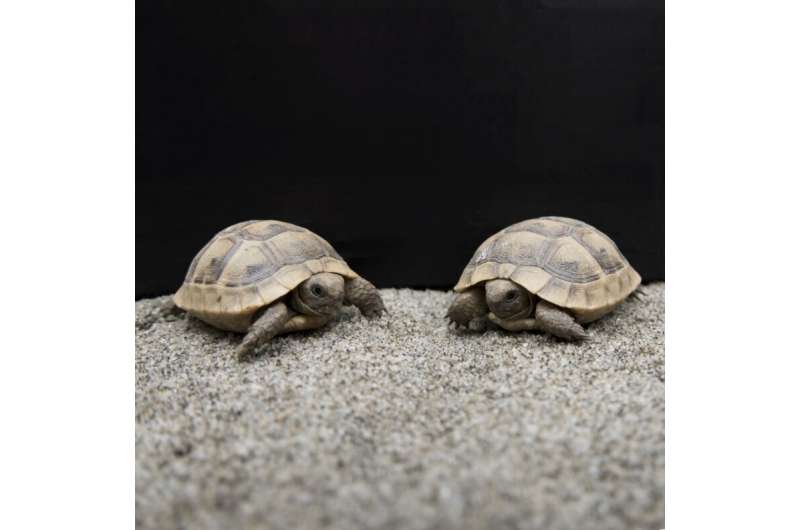This article has been reviewed according to Science X's editorial process and policies. Editors have highlighted the following attributes while ensuring the content's credibility:
fact-checked
peer-reviewed publication
trusted source
proofread
New study reveals reptiles' spontaneous association between vision and hearing

An international research team from Queen Mary University of London, U.K. and the Rovereto Civic Museum Foundation, Italy has made a groundbreaking discovery regarding reptiles and their ability to match visual and auditory information.
Their study published in the journal Biology Letters showed that reptiles demonstrate spontaneous associations between two different sensory modalities: vision and hearing. Tortoises associated low sounds with large shapes and high pitch sounds with small shapes, even if they had not been trained to do so. These results show how brains are prepared to predict visuo-acoustic correspondences that are likely to occur in the natural world.
Previous research has shown similar matching between sensory modalities (crossmodal associations) in mammalian species such as humans, chimpanzees, and dogs. However, it was unclear whether these associations were present in other vertebrate animals, including reptiles. The study led by Dr. Maria Loconsole from Queen Mary University of London (now at University of Padova) and Dr. Elisabetta Versace also from Queen Mary University of London aimed to fill this gap in knowledge.
To unveil the presence of spontaneous preferences for matching the two dimensions of acoustic pitch (high vs. low tone) and visual size (small vs. large disk), the team tested land tortoises (Testudo hermanni) in a choice task. After being trained to follow any sound to find a food reward, tortoises were tested for the preference for high and low pitch sounds associated to either small or large shapes.
"Astonishingly, the tortoises consistently chose small disks when presented with high pitch sounds, and large disks when low pitch sounds were presented. The study has helped us understand how the patterns present in the natural environment such as correspondence between size and pitch shape the cognitive abilities of animals," says Loconsole.

These findings suggest that crossmodal associations are widespread across species and animal groups, indicating that they may be an organizing principle of the vertebrate brain. "It is possible that mammals, birds, and reptiles have independently evolved this mechanism, or it may be a predisposed mechanism shared by descent from a common ancestor. Expanding research to a broad range of species is important to understand general principles of the organization of the brain and evolution of behavior," concludes Versace, Senior Lecturer at Queen Mary University of London.
"I enjoyed collaborating with Queen Mary University of London as it demonstrated the importance of preserving the sanctuary not only for the protection of land tortoises but also for advancing knowledge on animal behavior and cognition," says Gionata Stancher, the head of Zoology Rovereto Civic Museum Foundation.
More information: Maria Loconsole et al, Crossmodal association between visual and acoustic cues in a tortoise ( Testudo hermanni ), Biology Letters (2023). DOI: 10.1098/rsbl.2023.0265
Journal information: Biology Letters
Provided by Queen Mary, University of London




















